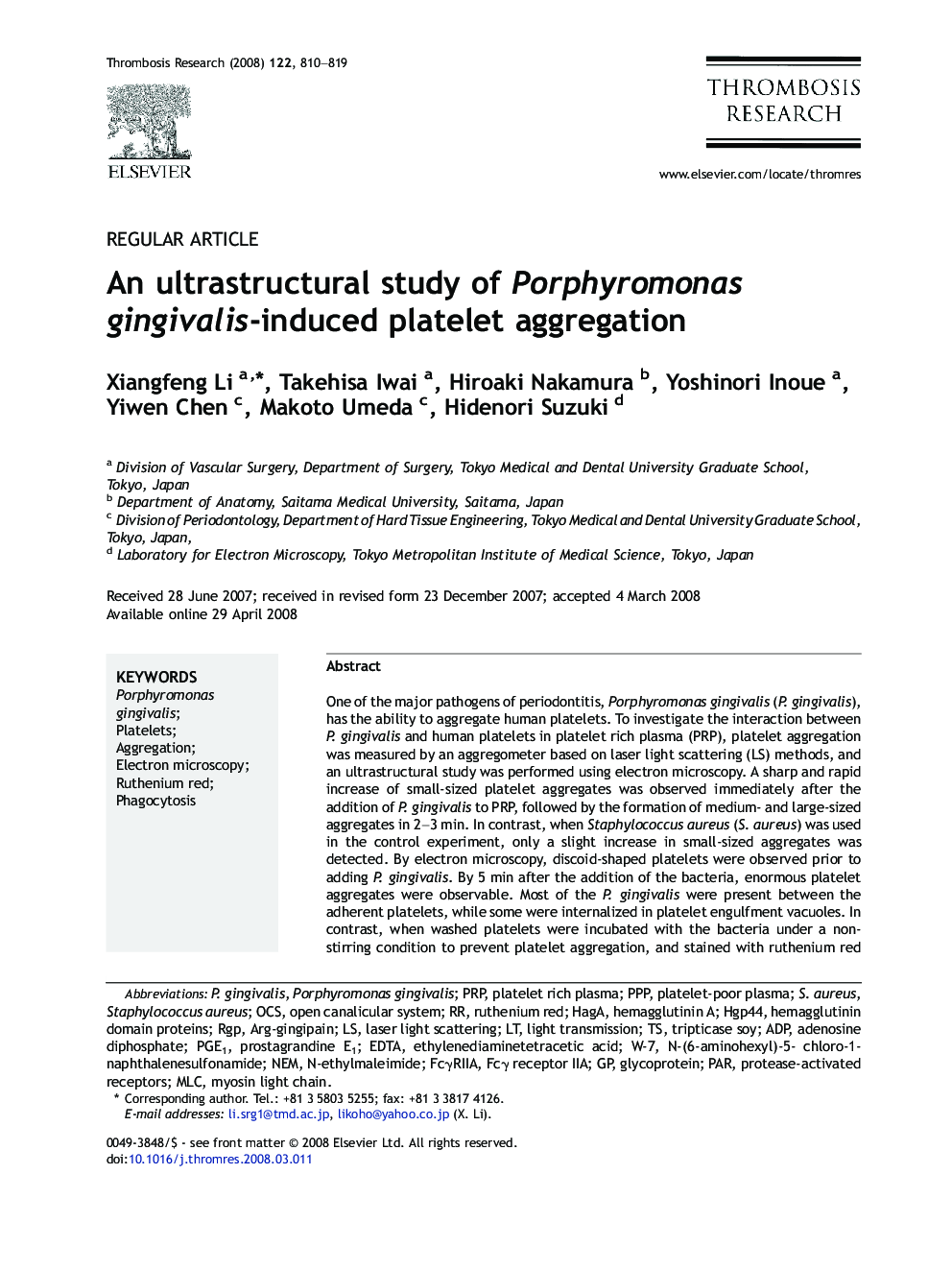| Article ID | Journal | Published Year | Pages | File Type |
|---|---|---|---|---|
| 3029398 | Thrombosis Research | 2008 | 10 Pages |
One of the major pathogens of periodontitis, Porphyromonas gingivalis (P. gingivalis), has the ability to aggregate human platelets. To investigate the interaction between P. gingivalis and human platelets in platelet rich plasma (PRP), platelet aggregation was measured by an aggregometer based on laser light scattering (LS) methods, and an ultrastructural study was performed using electron microscopy. A sharp and rapid increase of small-sized platelet aggregates was observed immediately after the addition of P. gingivalis to PRP, followed by the formation of medium- and large-sized aggregates in 2–3 min. In contrast, when Staphylococcus aureus (S. aureus) was used in the control experiment, only a slight increase in small-sized aggregates was detected. By electron microscopy, discoid-shaped platelets were observed prior to adding P. gingivalis. By 5 min after the addition of the bacteria, enormous platelet aggregates were observable. Most of the P. gingivalis were present between the adherent platelets, while some were internalized in platelet engulfment vacuoles. In contrast, when washed platelets were incubated with the bacteria under a non-stirring condition to prevent platelet aggregation, and stained with ruthenium red (RR) as an electron dense tracer of the cell surface including the open canalicular system (OCS), both RR-positive and -negative vacuoles containing P. gingivalis were identified in the activated platelets. Thus, this observation suggests that P. gingivalis residing in the RR-negative vacuoles is incorporated into the platelet cytoplasm by phagocytosis.
